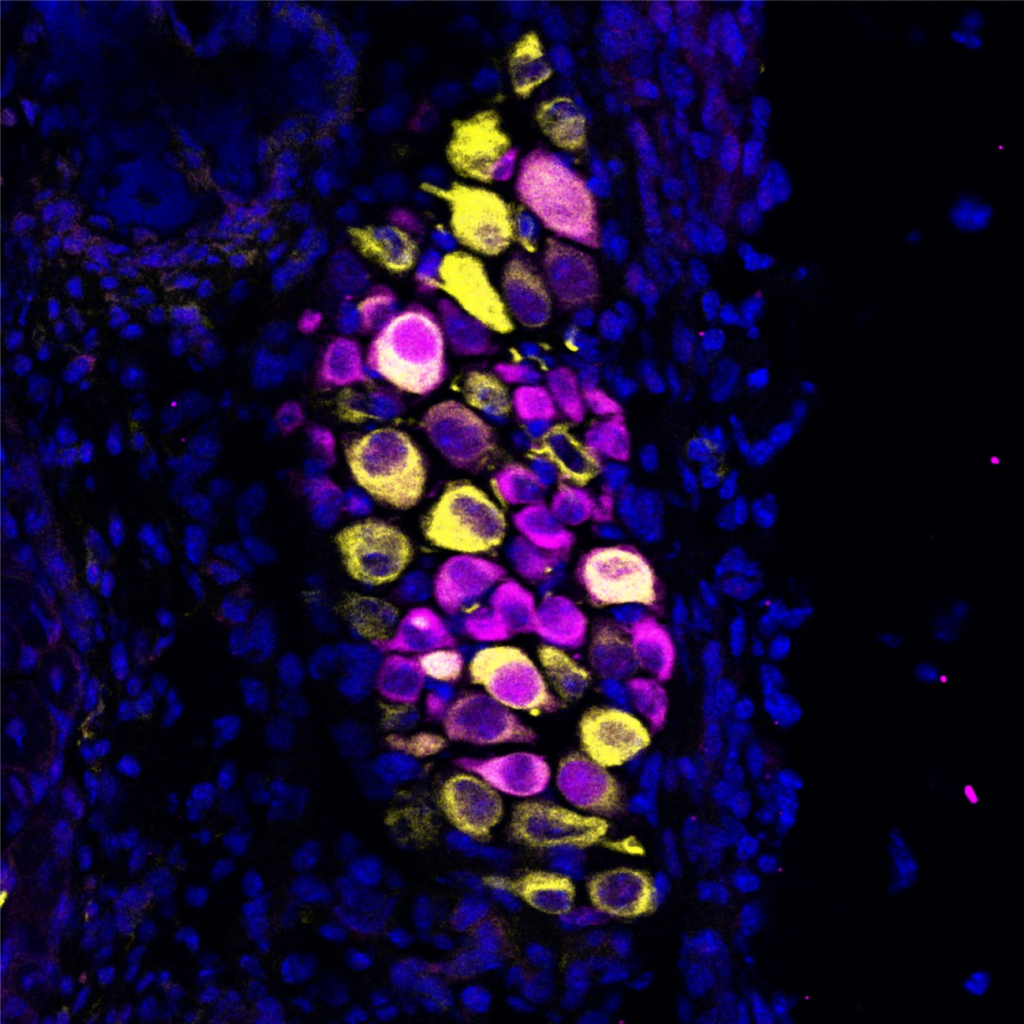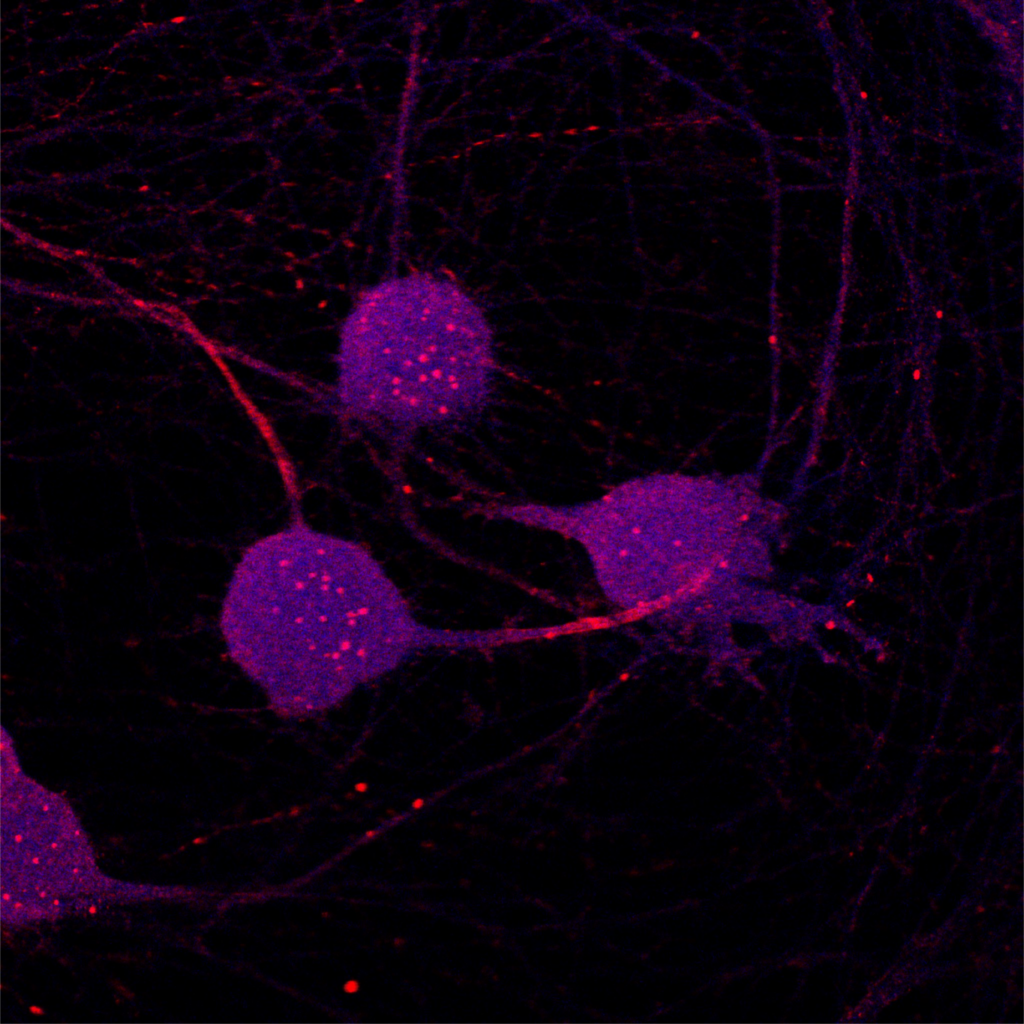KANTARCI LAB
Artistic rendering of Nav expression in sensory neurons by Jo Wozniak at The Texas Advanced Computing Center at The University of Texas at Austin
NEWS
RESEARCH INTEREST
Neural maturation is traditionally viewed as a property of neurons that develops along the neuronal differentiation program. However, this perspective overlooks a significant component: glia, which constitute more than half of the cells in the nervous system. Glia perform many crucial functions, including the myelination of axons in both the central and peripheral nervous systems, facilitating fast, saltatory conduction of action potentials, and inducing synaptogenesis. Considering the active role of glia in development of the nervous system, and Dr. Kantarci’s prior research demonstrating a pivotal role for peripheral glia in inducing sensory neuron excitability, the goals of the Kantarci lab are to determine the glial mechanisms that induce maturation of neurons and development of neural excitability and to determine how these glial mechanisms are perturbed in neurological diseases.
VALUES

Our vision and values prioritize creating a lab environment where science is accessible to all. We are committed to providing opportunities for all trainees to run experiments, mentor and train each other, and learn collaboratively. We aim to build a lab culture where everyone excels, designs rigorous experiments, and makes scientific discoveries in a positive learning environment. With these values and rigor, we aim to enhance our understanding of glia and neural activity in sculpting the nervous system and identify new therapeutic targets for brain diseases.
RESEARCH AREAS

Glia in neural development in the PNS
Do Schwann cells modulate subtype specification and axonal development of sensory neurons?

Glia in disease
What is the role of glial PGE2 in neurological disorders and neuroinflammation?

Glia in neural development in the CNS
Do central nervous system (CNS) glia also initiate and regulate neuronal excitability in the brain?